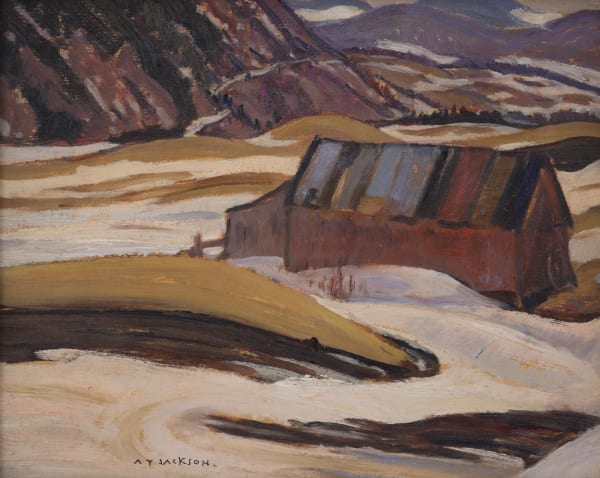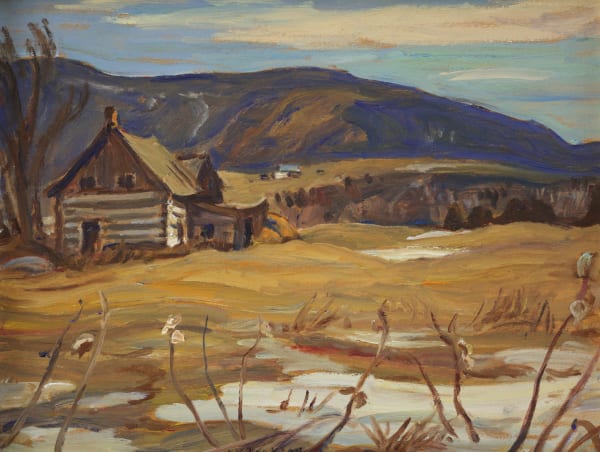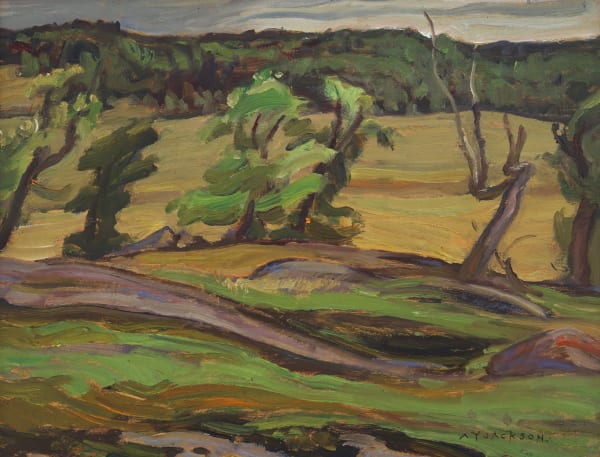“I realized I was talking to a man who had deep roots in the country he loved so dearly, and felt so much could be learned about the link between nature and the artist- a bond that turned out to be stronger in Alec’s case than the bonds most people form with other people.”
O.J. Firestone
A.Y. Jackson (October 3, 1882 – April 5, 1974) is a legendary figure in Canadian art. He was a founding member of the Group of Seven and he worked tirelessly to help other artists and to make Canadians proud of their country. He appears in dozens of biographies because so many people viewed him as a close friend. Unlike Lawren Harris who gave up on landscapes and turned to abstract art, Jackson stayed committed to representing Canada in all its glory. Although small in stature, he symbolized great strength as he ventured to harsh climates like the Arctic into his 80s.
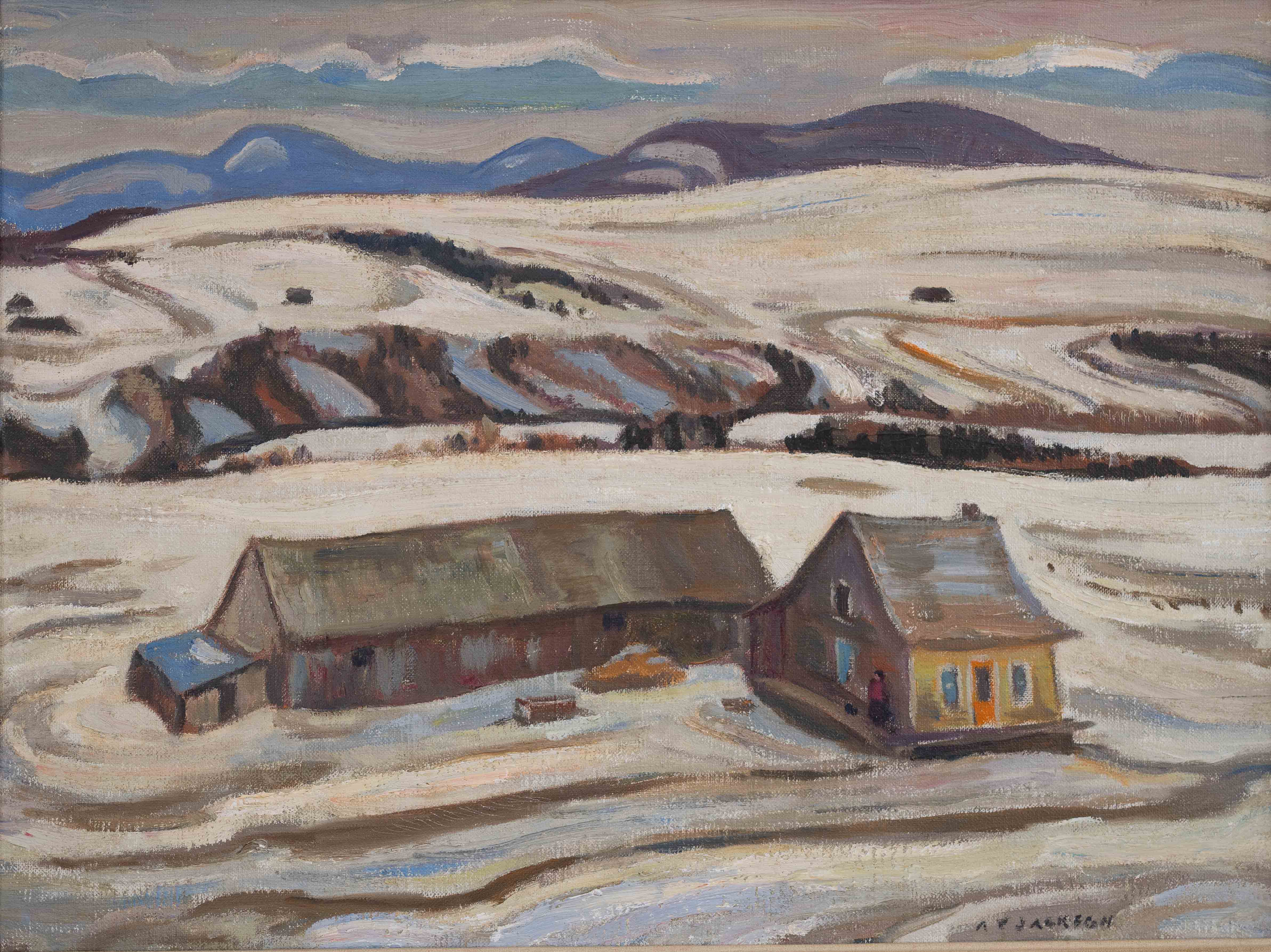
A.Y. Jackson; Laurentian Winter
Alexander Young Jackson was born in Montreal, Quebec in 1882. He did not have an easy start to his life. His father abandoned his family in order to hide from creditors and they were forced to move to a much rougher part of the city. He began working in commercial design at the age of thirteen and began art training three years later. Jackson took classes in Montreal under William Brymner and Chicago where he was mentored by Walter Marshall Clute and William Merchant Richardson. He saved his money and made a trip to Europe in 1907, where he studied under J. P. Laurens at the Académie Julian in Paris. He was also able to visit and paint in Belgium and Italy.
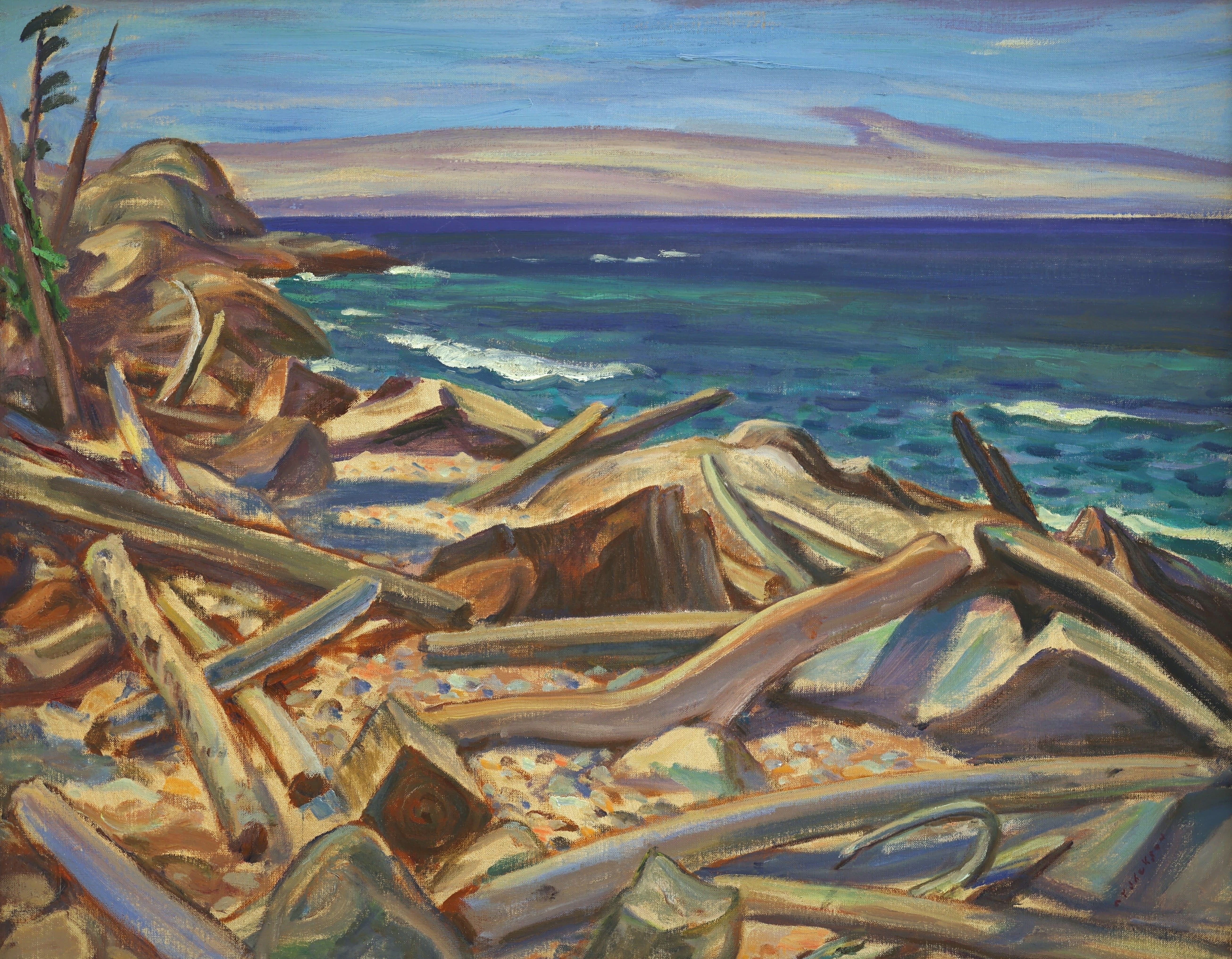 A.Y. Jackson; Driftwood
A.Y. Jackson; Driftwood
Upon returning to Canada, A.Y. Jackson strove to become a truly Canadian painter which meant to show the land as unique compared to European settings. However, this was a difficult period for him as he struggled to find buyers for his art. Thankfully, just as he was about to give up and move to the USA, J.E.H. MacDonald sent him a letter informing him that Lawren Harris wanted to buy his painting Edge of the Maple Wood.

A.Y. Jackson; October, Northern Ontario
His career was further solidified by Dr. James MacCallum offering him a year's wages to paint. He then moved into the Studio Building at 25 Severn Street and shared a studio with Lawren Harris. Unlike Tom Thomson and Franklin Carmichael who were only briefly residents of the building, Jackson stayed until 1955.
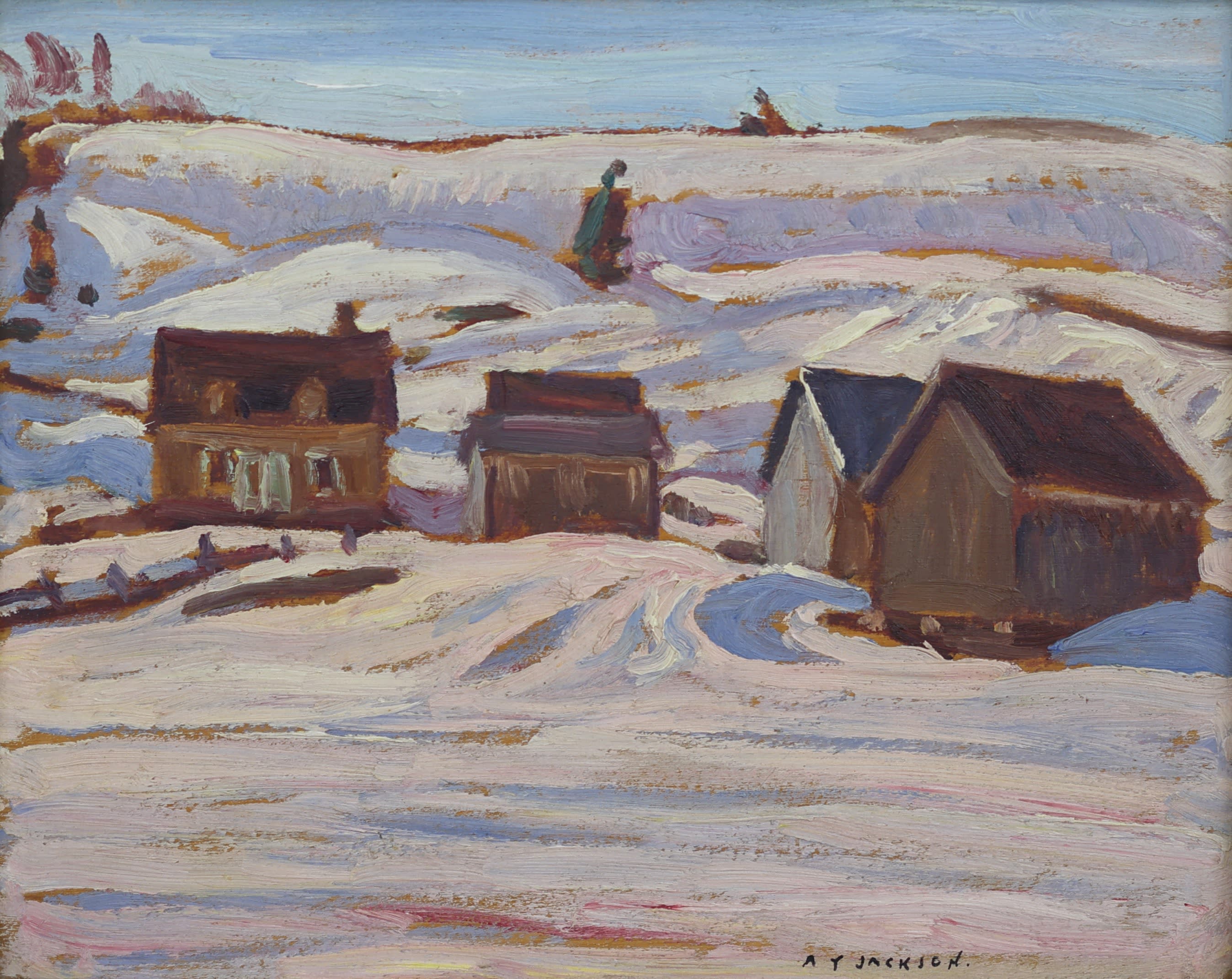
A.Y. Jackson; Old Farm Buildings, Quebec
In 1915, Jackson enlisted in the Canadian army during World War I, serving as a war artist during the second half of his tour of duty. He was deeply impacted by the death of Thomson who either drowned or was murdered in Algonquin Park.
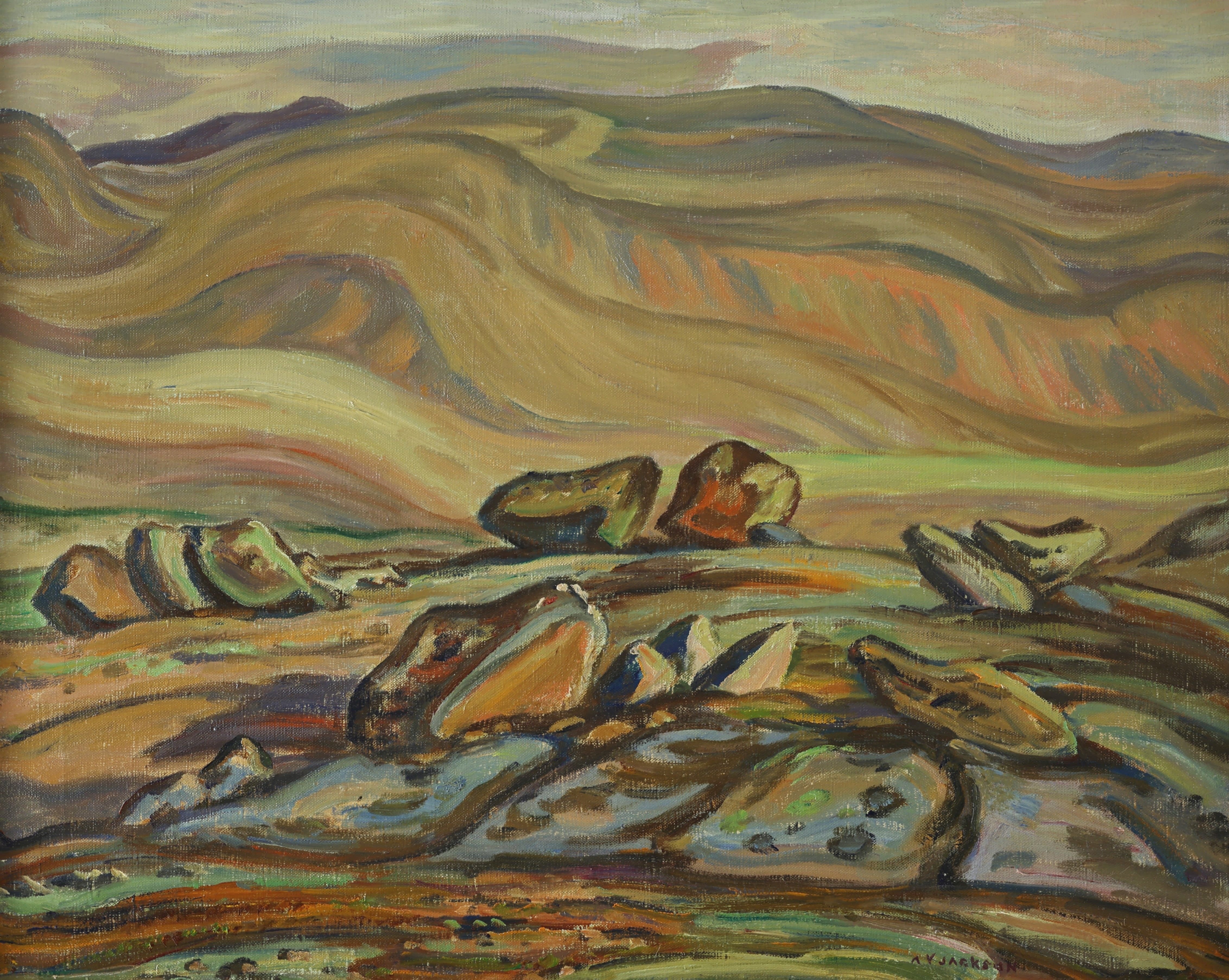 A.Y. Jackson; Sub Arctic Family Group
A.Y. Jackson; Sub Arctic Family Group
Following the war, Jackson sought to represent Canada’s “spirit,” or visual identity. Throughout his paintings, Jackson reflected the impact of the war by drawing tree stumps representing symbols of mourning that reflected the human cost of creating and maintaining a free nation.

A.Y. Jackson; Summer House at Poltimore, Quebec
Throughout the remainder of his life, A.Y. Jackson supported and taught new artists including the Canadian Group of Painters and the Beaver Hall Group, among which were a number of female artists such as Nora Collyer, Sarah Robertson and Anne Savage. Jackson and Savage struck up a close relationship and each proposed to the other at different times, but to no avail. Instead, the two were lifelong friends and supporters of one another, exchanging frequent letters throughout the years.

A.Y. Jackson; Patterson Sugar House
Jackson played a key role in making sure prints of the Canadian landscape were sent to troops in World War II and to towns and schools across Canada, encouraging Canadians to embrace our austere and beautiful landscape as a reflection of our identity and to see art as a tool for communicating pride in our nation.

A.Y. Jackson; Tamarack at Whitney, Ontario
A.Y. Jackson maintained memberships in several prestigious organizations, including the Royal Canadian Academy of Arts (RCA), the Arts and Letters Club of Montreal, and the Ontario Society of Artists (OSA). His works were featured in numerous exhibitions at major institutions such as the Art Gallery of Ontario, the Montreal Museum of Fine Arts, and the National Gallery of Canada, as well as international venues like the Tate Gallery in London.
Undoubtedly, one of the many things which makes Jackson stand out among Canadian painters is the very lengthy list of close friends he formed during his lifetime. Among this group not already mentioned were Randolph Stanley Hewton, Albert Robinson, Clarence Gagnon, John William Beatty, Robert Pilot, Dr. Frederick Banting, George Agnew Reid, Prudence Heward, Mabel May, Kathleen Morris, Lilias Torrance Newton, Ralph Burton, and Maurice Haycock.

